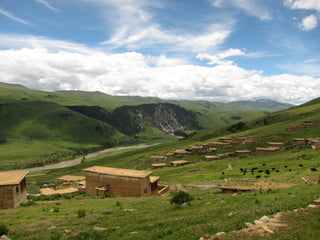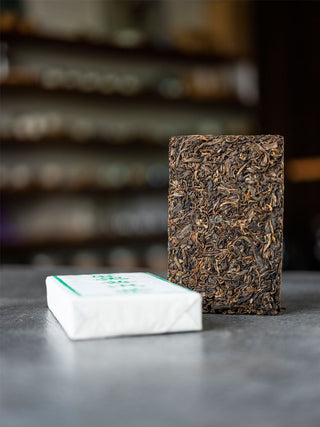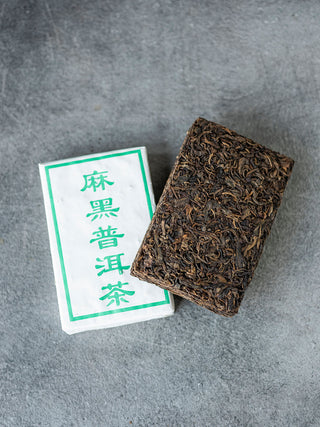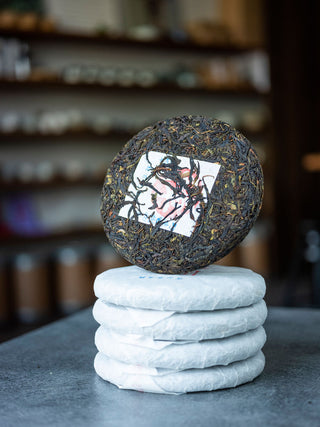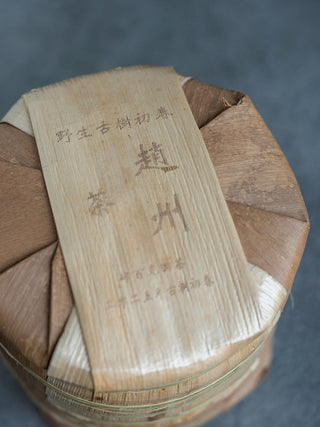Peter Galambos interview by Monika Szegedi
This is an interview with Péter Galambos conducted by Mónika Szegedi in 2009. The article was perhaps the first conversation with one of the founders of Zhao Zhou tea after his return from more than a decade in Tibet. The interviewer, Mónika Szegedi, is herself very well versed in the teachings of Buddhism and the Tibetan world, and this made for a very in-depth conversation. Time travel starts now…
Peter Galambos spent a decade in China, eight of these years he had spent in Eastern Tibet practicing meditation in mountain retreats. Originally, he came to China to study biochemistry but he soon changed his mind and switched to Traditional Chinese Medicine. In Southern China, as well as from his Chinese medical studies, he met living examples of Taoism and Chan Buddhism.
After spending some time studying the Tibetan language he traveled to Eastern Tibet where he studied the texts of Buddhist Bon and Tibetan medicine. His drive and his practice in harsh circumstances might remind readers of those of Sandor Korosi Csoma.
His occasional returns to Hungary and his public lectures gave us a great opportunity to get a glimpse into how Tibetans today practice Buddhism in China. This conversation was based on discussing these events, touching upon the topics of enlightenment and the teacher-student tradition that is the foundation of the Nyingma and Kagyu traditions in Tibetan Buddhism.
When and how did you end up in China?
In 1990 at the age of nineteen with a scholarship in biochemistry. But already during the foundational language course, I had changed my major to Traditional Chinese Medicine.
What did you study? How did you get in touch with Buddhism? Who were your main masters?
In Beijing, I started learning Tibetan from a friend who is from the Amdo region of Tibet (currently Qinghai province.) In southern China in Yunnan province, I studied medicine, Taoist practices, qigong, and Buddhism.
Here I had three main teachers. I learned medicine from a Manchu doctor, Laishen Ling, whose family has been the emperor’s personal doctors for generations. He practiced medicine as a family tradition and he was also a respected qigong master. He studied for five years near Lhasa in the famous Drepung monastery.
I first went to Tibet in the spring of 1993. I stayed there for a year and a half and then I spent two years in Nepal and India with my teacher, the 8th Adeu Rinpoche. After this, I went back to Yunnan for a short time and then spent eight years in retreat in Tibet, until 2004. Following this I stayed in Beijing until 2007.
In Tibet, I mostly stayed in Golog and the Nangchen area (both are in Qinghai province), and seven months in Nyarong (Sichuan province). I mostly studied with Nyingmapa and Drukpa Kagyu masters. Here I had two main masters, my Drukpa Kagyu master was the 8th Adeu Rinpoche, and my Dzogchen master was Khenpo Munsel Rinpoche.

Medicine
So you began with medical studies… How can one learn these traditional methods? How could you grasp the essence of Chinese and Tibetan medicine?
Tibetan medicine is more practical than theoretical so one can only learn it by practicing it, but it is very effective in treating many different diseases. Regarding its historical background, it is a mixed method: fundamentally it was created by mixing the roots of Indian and Chinese medicine, but they also took practices from the Uyghurs.
In theory, the Ayurvedic theory is the most dominant. In diagnostic methods, rely on the Chinese medical system of pulse diagnosis and empirical urine analysis. Pulse diagnosis does not simply mean counting the heartbeats, but it is a complex system that requires years of practice to master. This system checks the pulse’s density, rhythm, power, and flow at certain points of the body, and the changes in these. I was the type of assistant of my master so I could witness how he healed.
In Chinese medicine, each finger is connected to an internal organ. He was so sensitive that when he checked the pules on the different fingers the hair on his arm stood up when he touched the finger connected to the sick organ. He also had goosebumps on his body where the patient had problems so he could very accurately diagnose problems.
Tibetan medicine uses a lot of mineral medicines and we can see it was passed down in India in the ingredients in certain prescriptions that contain a lot of tropical plants, and spices, for example, cinnamon, that don’t grow in Tibet. These are brought in from India so some of these medicines can be very expensive. At times they use some matching ingredients that are easier to get in Tibet.
The gland of the musk deer is an important ingredient in Tibetan medicine, so it is hunted widely in Asia (and usually very expensive.) Even though it is a very cute animal, it reminds me of a kangaroo, it can even climb trees.
The theory of Chinese medicine is incredibly complex, yet interesting and its important characteristic is that they use a lot of practical examples when they are teaching it. They cherish and share the knowledge and experience collected through generations of doctors through millennia. This attitude, cherishing and valuing the work of their predecessors, is a very important element of Chinese culture.
Mountain Retreats
How did you end up in caves in Eastern Tibet? How did you become a student of multiple masters?
Throughout my studies I met many different people, Taoist, Chinese and Tibetan Buddhist masters. I found Buddhism very interesting, received many teachings and then I thought I should try this in practice. The best way to put what I learned into practice was going on a retreat, meditating, and contemplating in mountain caves. There is a serious tradition in Tibet so going on a retreat, staying in a cave, is nothing particularly special there.
Weren’t your Chinese and Tibetan teachers reluctant to pass on to you their experiences?
Not at all. They were very open, they were really happy that a foreigner is so interested and open towards their traditions. After meeting them they recommended who should I meet next, this is how I got from one teacher to the next. Sometimes the good fortune helped me to meet a great master, being at the right place at the right time.
First, I was in Golog for a year and a half. This happens as you meditate, sometimes you receive teachings and then ask questions from your lama. After I arrived in Nangchen Adeu Rinpoche just invited all the lamas for a six-month-long teaching and transmission session. This was a very happy coincidence.
After this, Adeu Rinpoche traveled to India and Nepal and he took me with him as his student. It was a fantastic opportunity as he had time to spend time with me and everywhere we went as his private student I could stay close to him. Throughout these 18 months he taught me different methods, for example the six yogas of Naropa. From Nepal I came back to Yunnan through Thailand. I also spent some months in Nyarong in Eastern Tibet. Finally, I got used to meditating, then I practiced a lot in Nangchen. In total I spent about eight years meditating in different caves.
What was your life like during these mountain retreats? Did you stay up there during the winter months without any heating? Weren’t you afraid you were going to freeze?
I wasn’t afraid. Though, during the first winter my foot froze, it got swollen, but spring came and it returned to normal. Obviously, there is no heating in caves but you make a small fire from Yak dung, feces, each morning when you make your morning tea. You throw a little tsampa (roasted barley) and you eat that during the day when you are hungry. There were some comfortable caves. At some there was strong direct sunlight, they made some kind of shelter from the winds for those who stayed there before me. But of course, there is nothing luxurious in this at all, but this is exactly what you need for meditation. What is important that the rainwater doesn’t seep to the places where you keep your firewood and dried yak dung. This happened of course at times and then I left and looked for a better place.
So, essentially you are spending time like this on the mountain, meditating and hiking around. I spent time at some truly spectacular places where you could see the sky, the mountain ranges around and the valley below. It is amazing that you are free to go out of your cave and yell and scream as loud as you want, as it bothers no one. Sometimes the locals and villagers bring you some food. Fresh butter is a real treasure. During the spring I went on collecting alms and I got fresh meat and milk. There are beautiful places around there and you can see this on the internet, or in a blog of one of my friends.
I am sure you got some experience about life in monasteries.
Yes, there are countless monasteries in the Tibetan Autonomous Region, in Eastern Tibet and in the Amdo and Kham regions. We can find monasteries that belong to the old schools of Nyingma, Kagyu, Sakya and Gelug traditions. There are also nunneries and Bonpo monasteries. East of Derge in Serta, Palyul and Gardze there are tens of thousands of monks and nuns living in complex monastery cities.
It happened that I didn’t stay in a mountain cave but in Golog I stayed near the monastery in a retreat house. The founder of a monastery had built this place and it was empty the time I arrived so I could use it. They knew that I am a student of the local master, Khenpo Munsel Rinpoche, so they offered me to use it.
You had no duties outside of practice?
No, nothing. I got food and then nobody bothered me. I read a lot these days, this is when I really got into reading written texts (Tibetan Buddhism). The current reincarnation of the founder of the monastery allowed me to freely use his personal library. I was reading, meditating, and chatting with the lama asking various questions.

Monasteries, practitioners, nomads and workers.
How do the villagers and locals relate to monks, practitioners and yogis?
They respect practitioners. When I lived in caves for over eight years the locals often visited me. They thought that if westerner practices for so long under such circumstances this man must be a big lama. The news of whose student the given practitioner is also spreads like wildfire and the respect towards the master is extended onto the student. They bring you all kinds of food, yak butter, tea and they might ask you for healing and fortune-telling. The name of fortune telling is Mo in Tibetan.
What kind of fortune-telling they were asking for?
For example, if the boy wanted to marry, where should he look for a wife? Or the yak wandered away, where can it be. Tibetans are very friendly and warm-hearted and if you do a fortune telling for them they will really go out of their way to do something nice for you.
Was your medical experience useful in Tibet?
Of course. At times they called me to see a patient. One time I told them there is nothing to do, and the person really died the next day. They invited me to do a Phova for the deceased, it is a ritual to send the person’s consciousness to the Buddha realms.
Other times they brought me the urine of the patient and from that I managed to tell what the problem was. Sometimes I used acupuncture as well. From what I learned from my masters I used the right remedy according to the situation.
End of part one of three.
Language
You lived at different parts of Eastern Tibet and you learned the language of the locals. Can one draw some universal conclusion from these experiences? Today the official Tibetan language is the one spoken around Lhasa in central Tibet. We know that due to the huge geographical distances different regions developed their own dialects. What is your experiences with these? In practice is there a standard Tibetan language everybody speaks? Does this create a certain type of national identity? The different regions living far distances from one another consider themselves primarily Tibetans or are they more tribal and consider themselves from a certain region, like I am from Golog, Nyakrong or Nangchen?
Each region has its distinct dialect. They consider their own ways different from the rest: for someone from Amdo the Lhasa dialect is “the other”, foreign, “those from Lhasa are different”. So this way it is difficult to speak of a united national identity, at least among the eastern Tibetans. We have to be careful about this topic outside of Europe.
At the same time classical Tibetan, as a sacral language, due to the huge volume of religious texts written in it since it became the official writing method in the 7th century still holds the nation’s culture together. Even of the Tibetans living in diasporas. This way it conserves classical Tibetan thinking and its milliard ways of expression.
Yes, this is correct.
To be continued soon with a discussion on meditation and Dzogchen practice.
Translated by our great friend Patrik Izing in Beijing, China
